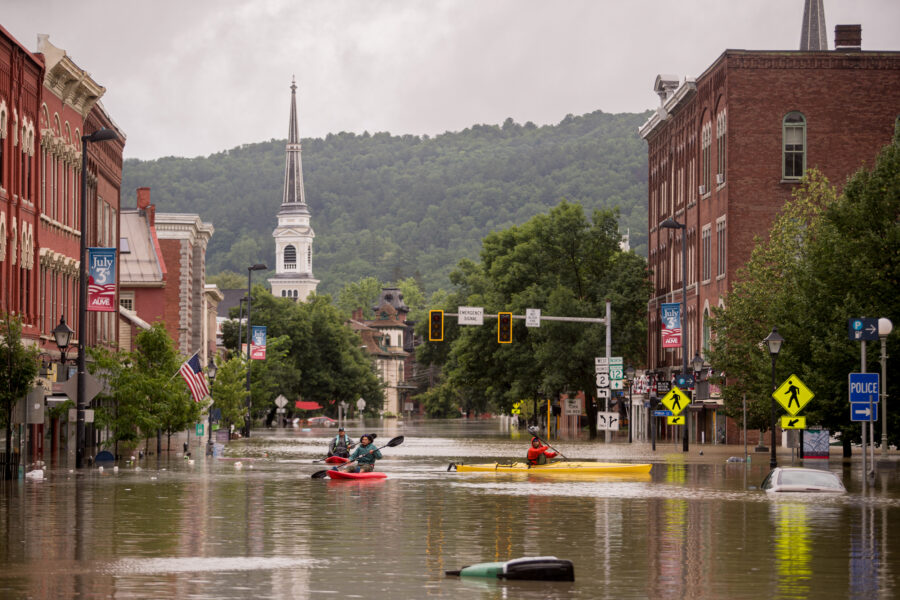The tribe at the heart of the contested Dakota Access oil pipeline asked the Department of Justice to step in after law enforcement arrested 127 activists using what the tribe’s chairman called “military tactics.”
“Thousands of persons from around the country, and the world, have come to express their opposition to the pipeline in a peaceful way,” said Dave Archambault II, chairman of the Standing Rock Sioux Tribe, in an Oct 24 letter addressed to U.S. Attorney General Loretta Lynch. “But state and local law enforcement have increasingly taken steps to militarize their presence, to intimidate participants who are lawfully expressing their views, and to escalate tensions and promote fear.”
Archambault’s letter cites the use of aerial surveillance, roadblocks and checkpoints, military vehicles and “strong-arm tactics” such as the “invasive and unlawful strip searches of men and women who have been arrested for misdemeanors.”
He urges the Justice Department to “investigate these matters promptly, to address civil rights violations by state and local law enforcement, and to protect the right to free speech and free exercise of religion.”
The letter was released on the same day that more than 100 protesters—who call themselves water protectors—set up camp on private ranchland along the pipeline route near Cannon Ball, N.D in Morton County.
Energy Transfer Partners, the Dallas-based company behind the pipeline, has not responded to requests for comment. Neither has the Department of Justice or the Morton County sheriff’s office.
Energy Transfer Partners bought the land in September, but the activists now say the land still belongs to the tribe under the Fort Laramie Treaty of 1851 and was never ceded to the U.S. government.
“If DAPL [the pipeline company] can go through and claim eminent domain on landowners and Native peoples on their own land, then we as sovereign nations can then declare eminent domain on our own aboriginal homeland,” said Indigenous Environmental Network organizer Joye Braun in a prepared statement.
Monte Mills, a professor at the University of Montana law school, said the land claim “raises complicated questions about historical events and context.” The current Standing Rock Sioux reservation is smaller than the area originally designated as reservation land under the 1851 treaty, he said.
Mills, who formerly worked as in-house counsel for the Southern Ute Indian Tribe, said the size of the Standing Rock reservation has been reduced over time, most notably by acts of Congress taken without tribal consent during the 19th century. “There is some basis” to the protesters’ argument that the 1851 treaty represents the last valid claim to that land, Mills said.
But according to Mills, the tribe would have a hard time making that claim in court, because the legal system tends to uphold the rights of Congress to repeal treaty rights, even if those decisions were made without consulting tribes.
The new protest camp lies a few miles from the original one where hundreds of Native Americans have gathered for months to oppose the pipeline, a $3.8-billion project to carry Bakken crude oil from North Dakota to Iowa. Its route passes near the reservation’s border and crosses the Missouri River, the main source of drinking water for the Standing Rock Sioux. More than half the pipeline has already been built.
Tribal members see the pipeline as the latest in a long string of environmental injustices that threaten their land and water. The Cannon Ball site has been a flashpoint for the ongoing protests, which have received support from more than 200 tribes,
green groups, Hollywood celebrities and politicians.
More than 100 activists were arrested Saturday for participating in what the Morton County Sheriff’s Department called “riot activities.” A press release from the department said protesters attempted to breach a line of police standing guard over pipeline construction equipment, and one protester pepper-sprayed a police officer. The protesters also used a drone to record footage of the confrontation, and
law enforcement say they shot the drone, forcing it to land, because it endangered a police helicopter.
Dallas Goldtooth, a campaign organizer for the Indigenous Environmental Network, said the arrests happened after the police told the crowd to disperse. Goldtooth said the activists did begin to pull back, but couldn’t disperse quickly enough because some of the protesters were elderly. Goldtooth said Saturday marked the first time members of the National Guard participated in arresting protesters, and he’s worried about what he sees as increased militarization.
A Facebook Live video posted by an activist starts mid-arrest as a protester is pulled to the ground. At one point a law enforcement officer says, “You’re all arrested!” before retreating to stand with other officers. The rest of the video shows the crowd chanting, singing, and praying, with shouts of “Water is life!” and “We are not violent!”
The Guardian reported the police used batons and pepper spray, and arrested a number of journalists and filmmakers who were covering the protest.
The last major confrontation between protesters and security prompted the Obama administration to call for more consultations with the tribe and to withhold a permit for part of the pipeline route. The decision came days after private security guards with guard dogs
clashed with protesters following the destruction of cultural artifacts—including historical stone markers used at burial sites—that were razed during pipeline construction.
Archambault’s letter said the situation in North Dakota “is reminiscent of the tactics used against protesters during the civil rights movement some 50 years ago.”
The U.S. has “a long and sad history of using military force against indigenous people—including the Sioux Nation. I would like to think that those days are past…But when I see the militarization taking place in North Dakota against Indian people, I am genuinely concerned,” he wrote.
He urged the Justice Department to investigate before the situation escalates.











